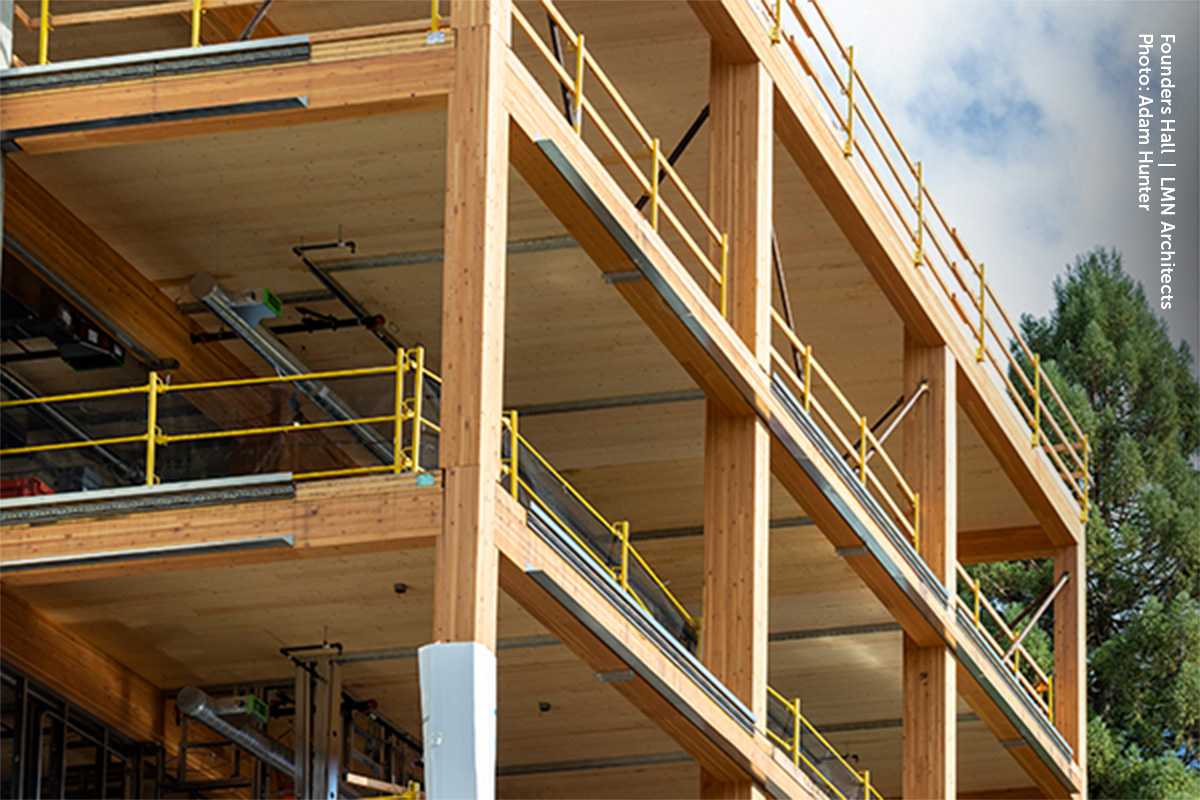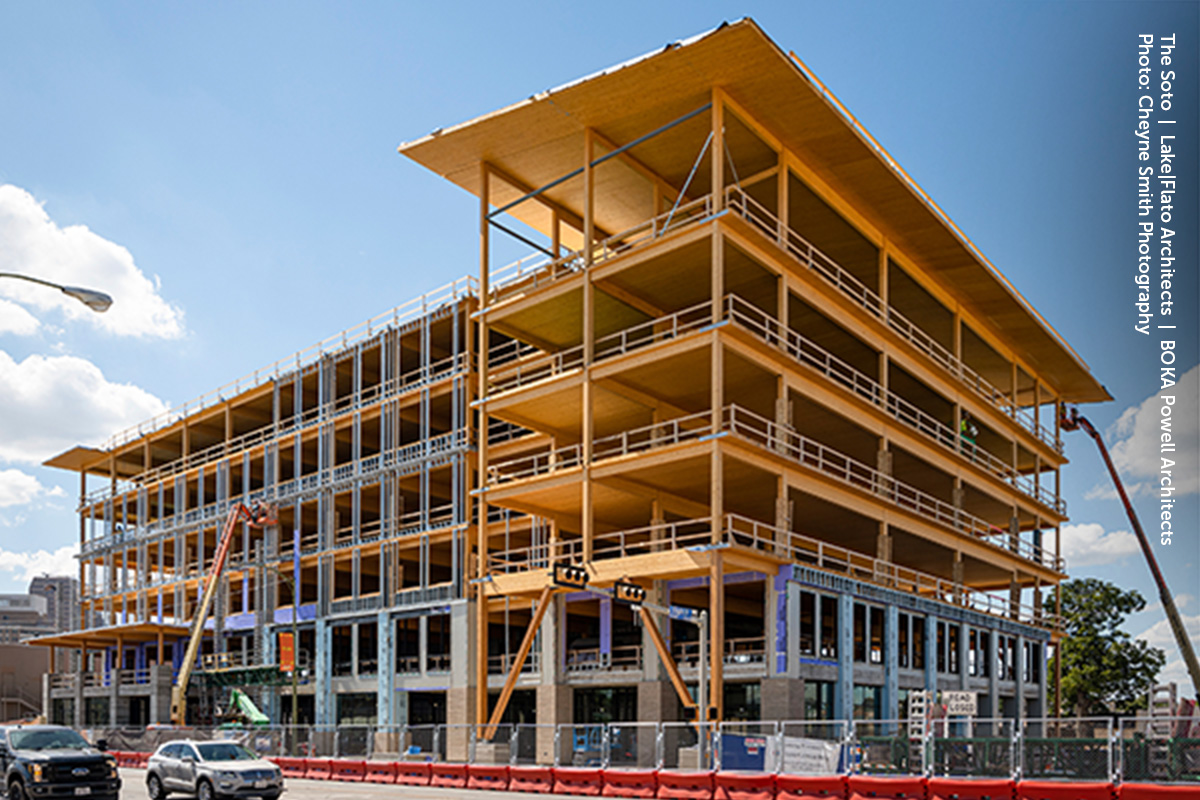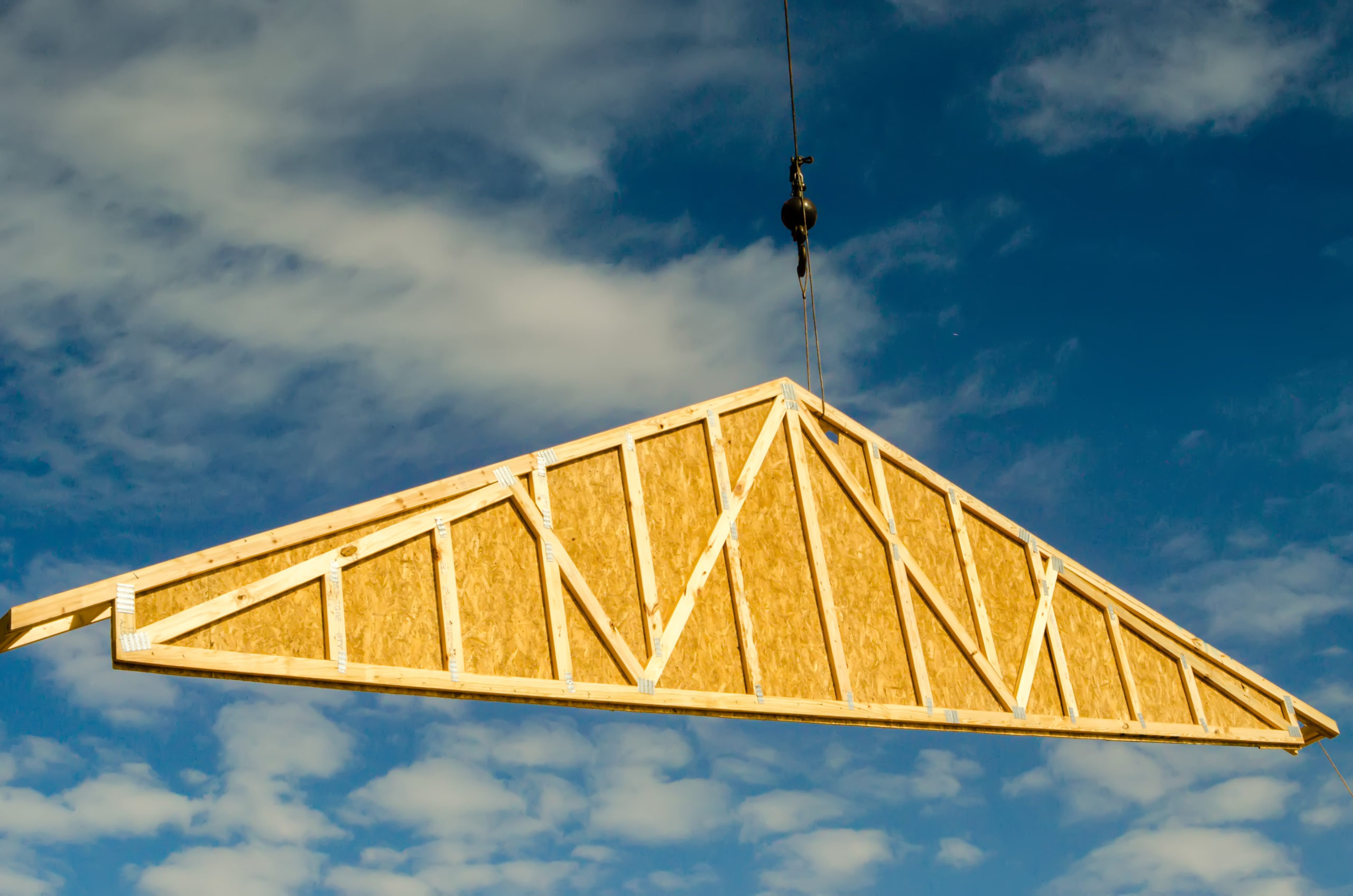HIGHLIGHTS
Program Updates
Carbon Offset Program Adds New Value to Mass Timber Buildings

In a conversation with Think Wood, the leadership team of Aureus Earth explains their new carbon offset program, and how it can monetize carbon stored in a mass timber building.
Launched with a pilot program at the new mass timber Founders Hall at the University of Washington’s Foster School of Business, Aureus Earth is unlike any other carbon offset program currently on the market; it offers financial incentives to builders and developers to encourage them to use carbon-storing materials like mass timber. In this Q+A, the company leadership outlines why they believe carbon-storing incentives are as important as energy efficiency measures to combating climate change, and why mass timber is the best material with which to pilot this idea.
Monetizing the carbon storage properties of wood creates new opportunities for mass timber in the built environment—and incentivizes developers and owners to pursue using mass timber in new construction in ways that could be market-changing. Funded in part by the Binational Softwood Lumber Council, Aureus Earth’s program is one to watch to discover incremental opportunities for mass timber in the marketplace.
WoodWorks Adds New Resources to Address Insurance Barriers

With increasing reports of insurance challenges on mass timber projects, WoodWorks has created several new resources to assist project teams in navigating the insurance process. They include:
- Conversations with insurers. In this three-part video series, WoodWorks talks to Patrick McBride, Head of Construction Property at Zurich Insurance, who addresses the following questions: Why are insurers now providing mass timber-specific insurance and how are those programs structured? How should insurers view mass timber relative to other structural building materials? What information should AECD teams be prepared to share with their insurers on mass timber projects?
- Mass Timber Project Questionnaire for Builder’s Risk Insurance. To help facilitate the insurance process, WoodWorks created this editable document that construction, development, and design teams can complete with project-specific information to share with potential insurers.
- Insurance Industry Survey. WoodWorks is also collecting feedback from the insurance industry regarding the insurability of mass timber construction, so perceived risks can be effectively addressed. Insurance professionals who complete this survey are automatically entered to win a free pass to the 2023 International Mass Timber Conference.
Providing resources to AEC professionals to help overcome hurdles, such as these resources for how to best work with and allay the concerns of potential insurers, helps remove barriers to more widespread adoption of mass timber.
State Fire Marshal Group Reverses Tall Mass Timber Opposition Following AWC Outreach
The American Wood Council’s fire service engagement initiative has made critical inroads with fire service leadership, bringing about a recent change of position on tall mass timber buildings from the National Association of State Fire Marshals (NASFM).
During the 2021 I-code development process (which ultimately allowed tall mass timber buildings in the new code) the NASFM Board issued a position statement opposing tall mass timber code proposals. Position statements like this one have been used as justification for refusing to adopt tall mass timber code provisions in states like Florida. At the most recent National Fire Protection Association Fire Marshal Forum, AWC’s Fire Service Relations Manager Ray O’Brocki presented on tall mass timber codes to the NASFM executive board. Armed with new understanding, the board voted unanimously to state that it no longer opposed tall mass timber buildings providing structures are built to the current code. This follows AWC’s success in persuading the International Association of Fire Chiefs to revise a similar opposition statement.
Reversing these statements and gaining the endorsement of these organizations removes a roadblock to tall mass timber code adoption and could encourage other municipalities to adopt the tall mass timber code provisions as well.
Spotlight
Can the Solution to the Housing Crisis Be Found in a Factory?

Modular construction has long been hailed as a solution to producing more affordable housing, but the reality is that most prefab housing companies over the years have had trouble realizing economies of scale. As such, modular construction’s impact on the housing market has been statistically negligible, but the possible efficiencies in construction materials consumption and cost, labor, and construction timelines remain too good to pass by—especially in an industry still struggling with supply chain issues and labor shortages. That is why big builders like PulteGroup—no strangers to economies of scale—are turning to modular off-site construction and on-site assembly to increase efficiency.
PulteGroup CEO Ryan R. Marshall told NPR’s Planet Money that he hopes to supply 70% of his company’s homes from factories in the next decade, by fabricating construction assemblies, rather than whole room modules, and shipping them to new development sites. There are hurdles in terms of regulation and scaling up production, but McKinsey estimates that modular construction could speed construction timelines for new homes by 20-50%, which would help close the gap on the available housing shortage in the U.S., as well as provide new opportunities for increased lumber consumption.
Industry Resources
FEA’s Housing Dashboard
Virginia Tech's Monthly Housing Report
This monthly housing commentary report is a free service of Virginia Tech and is intended to help one gauge future business activity in the U.S. housing market.
October 2022 Reports (released in December 2022)
Part A: October Housing Commentary
Part B: October Economic Conditions
November 2022 Reports (released in January 2023)
Part A: November Housing Commentary
Part B: November Economic Conditions

